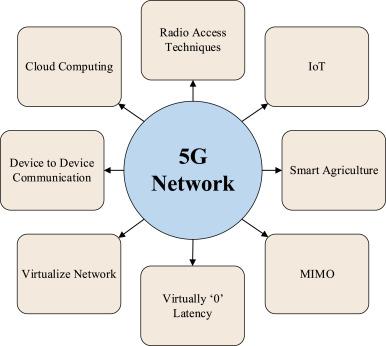How 5G is Revolutionizing Online Learning: Enhancing Connectivity and Educational Outcomes
Online education has become a mainstay in today’s fast-evolving world. From virtual classrooms to mobile learning apps, digital education is unlocking new opportunities for learners across the globe. Yet, robust, high-speed internet connectivity has always been a fundamental requirement for seamless and effective learning experiences. Enter 5G technology—the fifth generation of cellular networks—which is set to revolutionize online learning by offering lightning-fast,reliable connections that can drive better educational outcomes across all age groups.
Introduction: The Digital Transformation of Education
The COVID-19 pandemic accelerated the adoption of online learning platforms,revealing both their potential and limitations. Persistent issues like buffering,lag,and restricted access due to network congestion became glaring hurdles for millions of students and educators worldwide. As schools, colleges, and online education providers strive to bridge these gaps, advanced technologies are playing a pivotal role. Among these, 5G is emerging as a true game-changer for the digital classrooms of today and tomorrow.
What is 5G,and Why Does It matter for Online Learning?
5G stands for the fifth generation of wireless technology. Unlike previous network generations,5G networks promise:
- Ultra-high speed internet (up to 100 times faster than 4G)
- Ultra-low latency (minimizing delay in data transfer)
- Massive device connectivity (supporting thousands of devices in a small area)
- Enhanced network reliability
these improvements are especially notable for online education,where seamless video streaming,real-time collaboration,and interactive content are essential.
Key Benefits of 5G for Online Learning
1. Improved Connectivity and Access
- Broader reach: 5G enables high-speed internet in urban, suburban, and rural areas, reducing the digital divide.
- Stable connections: students and teachers can join virtual classrooms without worrying about dropped calls or video freezes.
- mobile learning: 5G empowers students to learn on the go using smartphones, tablets, and other mobile devices.
2. Enhanced Learning Experiences
- Real-time collaboration: Ultra-low latency allows synchronous video classes, group projects, and instant feedback.
- Immersive technologies: 5G allows seamless use of VR (Virtual Reality), AR (Augmented Reality), and mixed reality for interactive simulations and virtual field trips.
- High-quality multimedia: High-definition videos, 3D models, and rich educational content load instantly with 5G, reducing frustrations.
3. Personalized and Inclusive Education
- Adaptive learning platforms: Enhanced connectivity enables personalized, AI-driven learning tailored to individual student needs.
- Accessibility: Students with disabilities benefit from advanced assistive technologies powered by high bandwidth and low latency.
- Language learning: Real-time translation and AI tutoring are made smoother and more responsive with 5G speeds.
Case Studies: 5G in Action for Online Learning
Case Study 1: Smart Classrooms in South Korea
South Korea has been at the forefront of deploying 5G technology in education. In partnership with tech giants, several schools have integrated AR/VR content powered by 5G networks. Students participate in virtual science labs and history field trips, offering hands-on experiences that deepen understanding and retention. Feedback from educators has highlighted improved student engagement and collaboration.
Case Study 2: rural India’s Leap Towards Inclusive Education
In India, 5G pilot projects have connected remote rural schools to quality teachers through real-time video conferencing. These initiatives have reduced absenteeism and improved examination results among rural students, demonstrating how 5G can address educational inequalities and promote social inclusion.
First-Hand Experience: An Educator’s Viewpoint
“After our school upgraded to a 5G campus, the change was immediate. Live-streaming lessons became crystal clear, and students working from home or on mobile devices coudl participate as if they were in the classroom. It’s transformed how I teach science—now, we can run live experiments with students watching in augmented reality!”
— Mrs. Payal Singh, Biology Teacher
Practical Tips: How Schools and Institutions Can Leverage 5G
- Invest in 5G-compatible devices: Ensure students and staff have access to smartphones and tablets that support 5G bands for optimal performance.
- Upgrade learning platforms: Select Learning Management Systems (LMS) and tools that can utilize 5G’s speed and support multimedia learning assets like video, AR, and VR.
- Prioritize cybersecurity: Advanced connectivity must be matched with robust security protocols for data privacy, especially in remote learning.
- Plan professional advancement: Train teachers to integrate advanced tech (like AR/VR) into their curricula and leverage real-time feedback tools.
- Monitor network performance: Use analytics to ensure network reliability and troubleshoot connectivity issues proactively.
Challenges and Considerations for 5G Adoption in Education
- Infrastructure costs: Building and maintaining 5G networks, especially in underserved areas, can be expensive.
- Device affordability: Not all students can afford 5G-enabled devices; schools may need to offer subsidies or device lending programs.
- Urban-rural gap: While 5G is expanding rapidly in cities,rural areas may face slower adoption timelines.
- Training needs: Continual professional development is essential for staff and educators to make full use of 5G benefits.
The Future: 5G and the Next Generation of Online Learning
The integration of AI,big data analytics,and cloud computing with 5G will further upgrade the landscape of online learning. Expect smarter assessments,intelligent content recommendations,and immersive virtual campuses. As newer generations of students enter digital classrooms,their expectations for interactive,responsive,and dynamic online learning environments will only grow. With 5G, educational institutions can keep pace and foster life-long learning in an increasingly connected world.
Conclusion: Embracing 5G for Powerful Educational Outcomes
5G is more than a technological advancement—it is a catalyst that’s making online learning faster, fairer, and more engaging for everyone. From smarter classrooms to remote rural outreach, 5G-enabled online education breaks barriers and equalizes opportunities. By investing wisely and preparing stakeholders, schools, colleges, and educational leaders can ensure that the transition to 5G strengthens not just connectivity, but also student engagement and achievement. The revolution has already begun—will your institution be part of it?
Ready to transform your online learning experience? Discover how 5G can empower your educational journey today!

